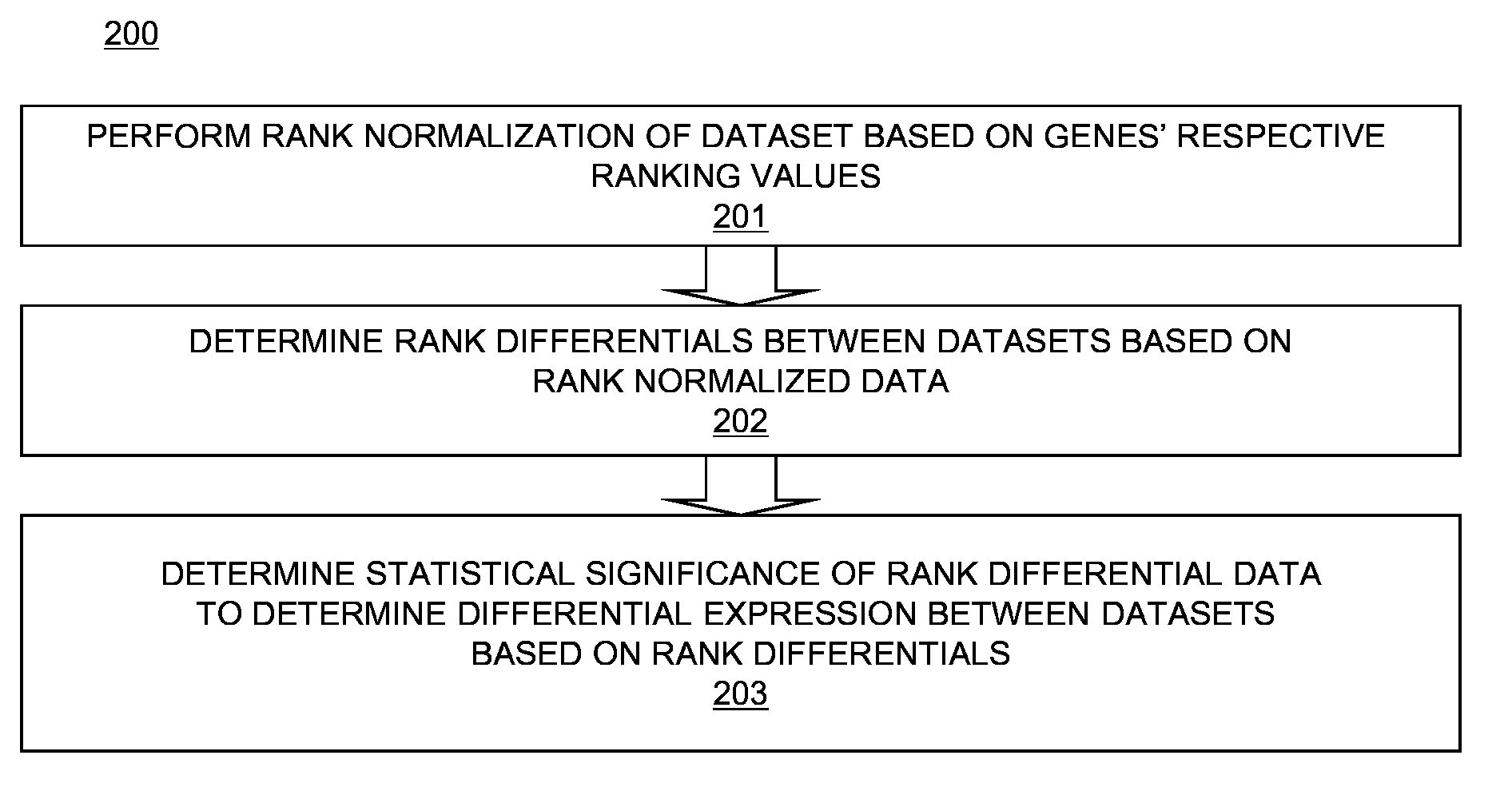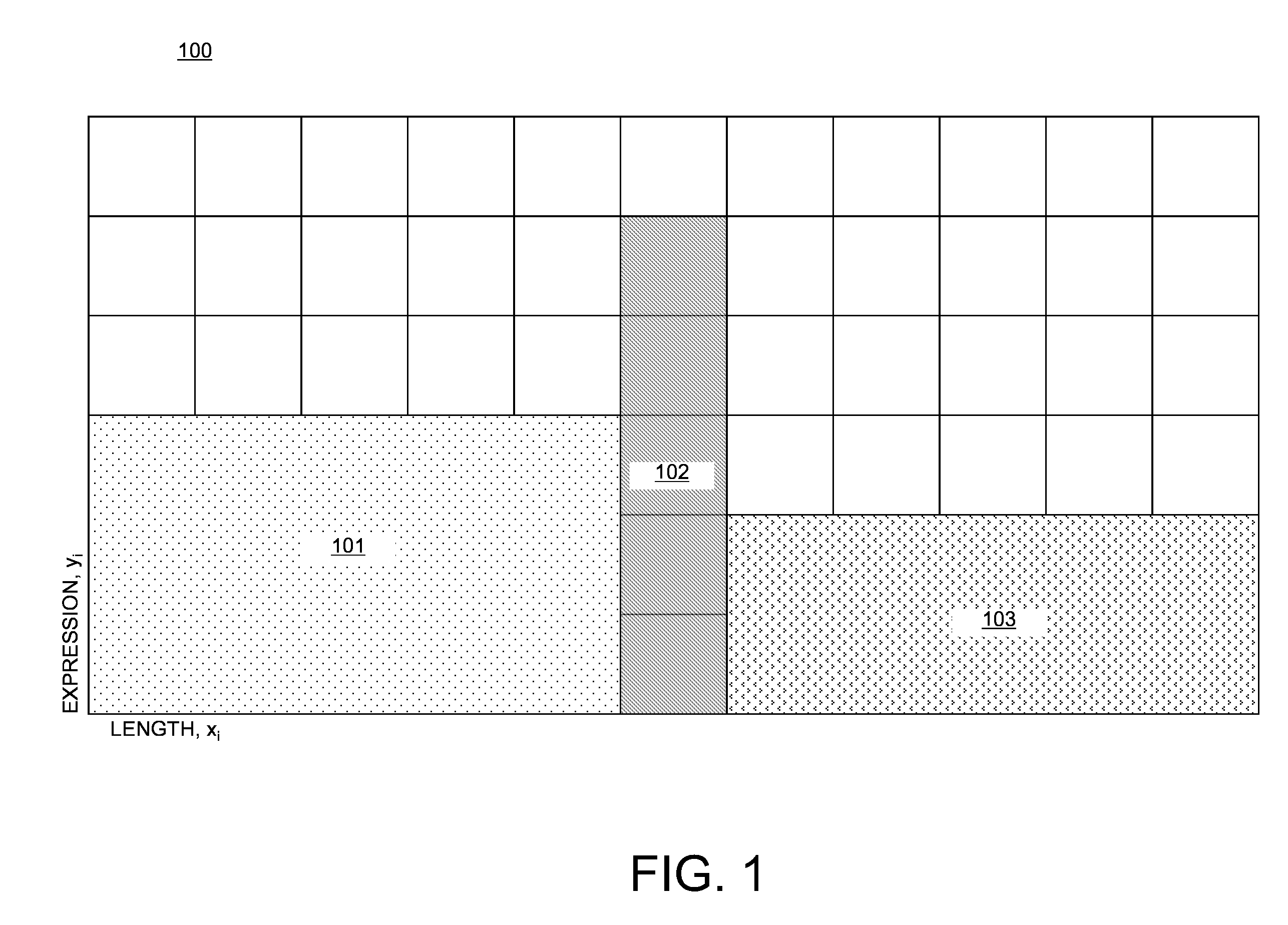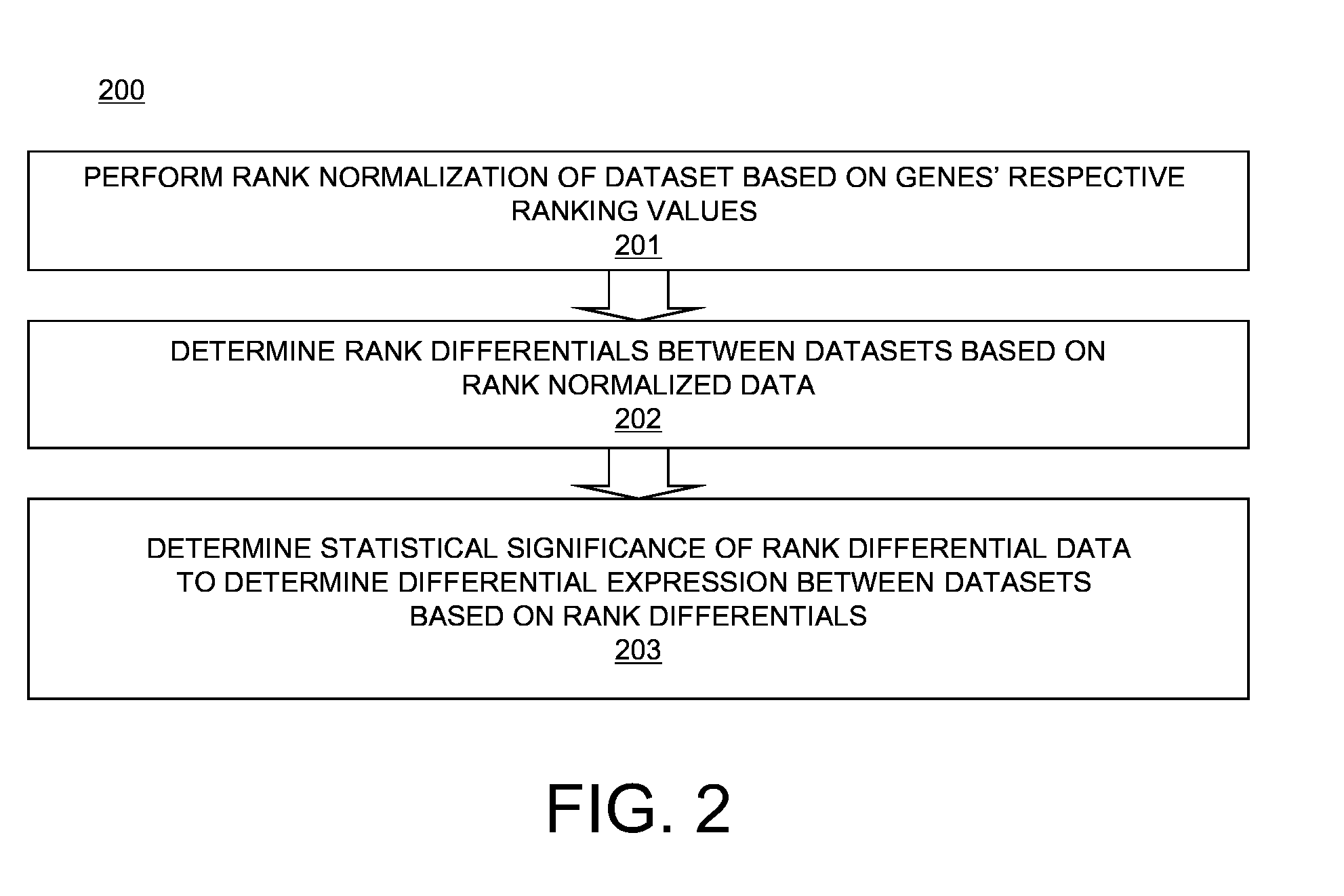Rank Normalization for Differential Expression Analysis of Transcriptome Sequencing Data
a transcriptome and rank normalization technology, applied in the field ofmessenger riboneucleic acid sequencing, can solve the problems of biased differential expression evaluation, large amount of gene data, and large amount of data based on activity, or expression,
- Summary
- Abstract
- Description
- Claims
- Application Information
AI Technical Summary
Benefits of technology
Problems solved by technology
Method used
Image
Examples
first embodiment
[0022]Differential expression data determined using rank normalization as described above with respect to FIGS. 2-4 may be used for functional inferences of individual genes and their networks using, for example, comparative transcriptomics. For example, let S1, S2, . . . , SM be rank normalized transcriptomic data in M different samples and / or time points. Let the number of genes in each set S be N. Various matrices of the transcriptomic data may be used to categorize genes, samples, and or time periods across sets. In a first embodiment, a M×N two-dimensional permutation matrix Pπ of gene rankings may be defined by:
Pπ[i,j]=n EQ. 3
where n is the rank of gene j in Si. The M samples may be hierarchically clustered based on distance measurements between any pair of rows in matrix Pπ. To determine a distance measurement between two rows in matrix Pπ, if ranki(k) denotes the rank of gene k in Si, the distance d between a pair Si and Sj (i.e., d(Si, Sj)) may be defined as:
d(Si,Sj)=√{squ...
second embodiment
[0023]In a second embodiment, a M×M×N three-dimensional comparative matrix Cδ[i, j, k], wherein i and j are sample numbers being compared, and k is a gene number, may be defined as follows:
Cδ[i,j,k]={X,ifi=j;1,ifi≠jandgenekisoverexpressedbetweenSiandSj;-1,ifi≠jandgenekisunderexpressedbetweenSiandSj;0,otherwise.EQ.5
The value of X is to be interpreted as undefined. Based on matrix Cδ, clustering of the genes on the x, y, and / or z-axes, or clustering of sample-pairs on the x and y axis, may be determined. This allows determination of similarities and differences between genes across different samples.
[0024]FIG. 5 illustrates an example of a computer 500 which may be utilized by exemplary embodiments of a method for rank normalization for differential expression analysis of transcriptome sequencing data as embodied in software. Various operations discussed above may utilize the capabilities of the computer 500. One or more of the capabilities of the computer 500 may be incorporated in a...
PUM
 Login to View More
Login to View More Abstract
Description
Claims
Application Information
 Login to View More
Login to View More - R&D
- Intellectual Property
- Life Sciences
- Materials
- Tech Scout
- Unparalleled Data Quality
- Higher Quality Content
- 60% Fewer Hallucinations
Browse by: Latest US Patents, China's latest patents, Technical Efficacy Thesaurus, Application Domain, Technology Topic, Popular Technical Reports.
© 2025 PatSnap. All rights reserved.Legal|Privacy policy|Modern Slavery Act Transparency Statement|Sitemap|About US| Contact US: help@patsnap.com



